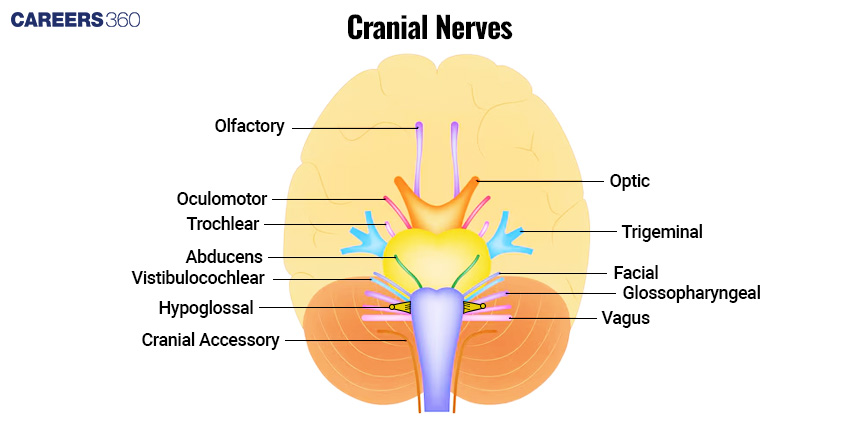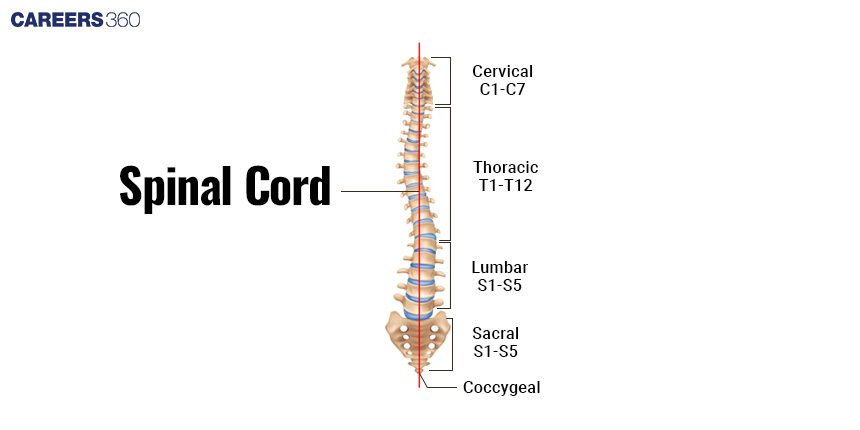Cranial and Spinal Nerves: Definition, Function, Diagram, Function, Structure
What Are Cranial And Spinal Nerves?
Cranial nerves are twelve pairs of nerves that directly emanate from the brain. These nerves take care of the sensory and motor activities related to the head and the neck. In contrast, the spinal nerves emanate from the spinal cord to ramify to different parts of the body and control the sensory and motor activities of the limbs and the trunk.
Both cranial and spinal nerves are branches of the PNS that carry critical information between the body and the CNS. The cranial and spinal nerves play a significant role in transmitting signals from the brain and spinal cord to the rest of the body. Such communications are required for both voluntary and involuntary activities, which include movement, sensation, and reflexes.
Overview Of The Nervous System
The nervous system forms a complex network that controls and integrates the activities of the body.
Central Nervous System (CNS)
Brain: The management centre of thoughts, emotions, and body functions.
Spinal cord: A channel for signals between the brain and the rest of the body.
Peripheral Nervous System (PNS)
The system of nerves outside the CNS is responsible for linking the CNS to limbs and organs.
Communicates between the brain/spinal cord and peripheral body parts.
Cranial Nerves
Cranial nerves are major components of the peripheral nervous system involved in sense and function activities within the head and neck.
These Nerves come directly out of the brain.
There are Twelve pairs of cranial nerves.
Classification Of Cranial Nerves
Sensory: Concerned with senses like smell, vision, and hearing.
Motor: Responsible for controlling muscle movements.
Mixed: They both act as sensory and motor nerves.
Diagram: Cranial Nerves

Functions And pathways
Every cranial nerve performs specific functions and takes specific pathways from the brain to the places they need to go to.
Table: List Of Cranial Nerves
Cranial Nerve | Function | Pathway |
Olfactory Nerve | Sense of smell | Nasal cavity to olfactory bulb |
Optic Nerve | Vision | Retina to brain |
Oculomotor Nerve | Eye movement, pupil constriction | Midbrain to Eye Muscles |
Trochlear Nerve | Eye movement (superior oblique muscle) | Midbrain to eye muscles |
Trigeminal Nerve | Facial sensation, chewing muscles | Pons to face |
Abducens Nerve | Eye movement (lateral rectus muscle) | Pons to eye muscles |
Facial Nerve | Facial expression, taste (anterior 2/3 of the tongue) | Pons to face |
Vestibulocochlear Nerve | Hearing and balance | Inner ear to brain |
Glossopharyngeal Nerve | Taste (posterior 1/3 of the tongue), swallowing | Medulla to throat |
Vagus Nerve | Automatic functions of the heart, lungs and digestive tract | Medulla to organs in thorax and abdomen |
Accessory Nerve | Shoulder and neck muscles | Medulla and spinal cord to muscles |
Hypoglossal Nerve | Tongue Movement | Medulla to tongue muscles |
Common Disorders
Conditions like Bell's palsy, trigeminal neuralgia, and anosmia reflect the clinical relevance of cranial nerves.
Spinal Nerves
Spinal nerves are essential for the transmission of signals between the spinal cord and the body.
These Nerves have their origin in the spinal cord.
The number of spinal nerves is thirty-one pairs.
Anatomy Of Spinal Nerves
Root and rootlets: Nerve roots which further subdivide into rootlets.
Dorsal and ventral roots: Dorsal roots transmit sensory signals, while the ventral roots transmit motor signals.
Diagram: Spinal Nerve

Functions And Pathways
Branches of the spinal nerves innervate the body and carry out sensory and motor functions.
Table: List Of Spinal Nerves
Division | Number of Pairs |
Cervical | 8 pairs |
Thoracic | 12 pairs |
Lumbar | 5 pairs |
Sacral | 5 pairs |
Coccygeal | 1 pair |
Common Disorders
Sciatica, herniated disks, and spinal stenosis are conditions that affect the spinal nerves. Comparisons:
Table: Difference Between Cranial And Spinal Nerves
Cranial Nerves | Spinal Nerves | |
Location | Emerge from the brain | Emerge from the spinal cord |
Function | Primarily Head and Neck | Body trunk and limbs |
Structure | Twelve Pairs | Thirty-one pairs |
Clinical Relevance
The knowledge of cranial and spinal nerves is crucial in medicine concerning the diagnosis and treatment of neurological disorders within these nerves.
Medicinal Importance:
Nerve functions and pathways play a significant role in the diagnosis and treatment of diseases.
Diagnostic Measures:
MRI: It details the structure of nerves.
CT scans: They help identify any structural abnormalities.
Electromyography: It is a test to measure the electrical activities in the muscles, so the test helps in diagnosing nerve damage.
Treatment Options For Nerve Disorders:
Medications, physical therapy, and surgical interventions are the treatment options for nerve disorders.
Recommended video on "Cranial and Spinal Nerves"
Frequently Asked Questions (FAQs)
Cranial nerves deal with the sensory and motor functions of the head and neck, including smell, vision, taste, hearing, and movements of the face.
Twelve cranial nerves: Olfactory, Optic, Oculomotor, Trochlear, Trigeminal, Abducens, Facial, Vestibulocochlear, Glossopharyngeal, Vagus, Accessory, and Hypoglossal.
Spinal nerves carry sensory and motor signals between the spinal cord and the rest of the body, controlling movement and sensation in the trunk and limbs.
Disorders like Bell's palsy, trigeminal neuralgia, sciatica, and herniated discs will affect these nerves, resulting in pain, loss of function, or sensory deficits.
Diagnostics include MRI, CT scans, and electromyography to assess structural and functional abnormalities.